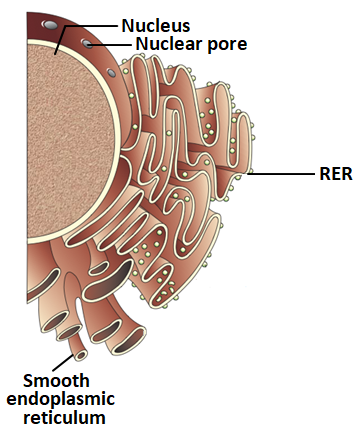The concept of "Omnis cellula-e-cellula" regarding cell division was first proposed by:
1. Aristotle
2. Rudolf Virchow
3. Theodor Schwann
4. Schleiden
Match the following and select the correct answer:
| Column I | Column II | ||
| (a) | Centriole | (i) | Infoldings in mitochondria |
| (b) | Chlorophyll | (ii) | Thylakoids |
| (c) | Cristae | (iii) | Nucleic acids |
| (d) | Ribozymes | (iv) | Basal body of cilia or flagella |
1. A-iv, B-ii, C-i, D-iii
2. A-i, B-ii, C-iv, D-iii
3. A-i, B-iii, C-ii, D-iv
4. A-iv, B-iii, C-i, D-ii
1. Basal bodies
2. Pneumatophores
3. Chromatophores
4. Heterocysts
| 1. | mitochondria | 2. | chromoplast |
| 3. | ribosomes | 4. | chloroplast |

| 1. | Golgi apparatus, protein synthesis |
| 2. | Golgi apparatus, formation of amino acids |
| 3. | Rough endoplasmic reticulum, protein synthesis |
| 4. | Rough endoplasmic reticulum, formation of glycoproteins |
1. proplastids
2. glyoxisomes
3. peroxisomes
4. mitochondria
Membrane-bound organelles are absent in:
1. Saccharomyces
2. Streptococcus
3. Chlamydomonas
4. Plasmodium
Cytochromes are found in:
1.
matrix of mitochondria
2.
outer wall of mitochondria
3.
cristae of mitochondria
4.
lysosomes
| 1. | matrix of mitochondria |
| 2. | outer wall of mitochondria |
| 3. | cristae of mitochondria |
| 4. | lysosomes |
Which one of the following statements about mycoplasma is wrong?
1. They are also called PPLO
2. They are pleomorphic
3. They are sensitive to penicillin
4. They cause disease in plants
Which one of the following does not differ in E.coli and Chlamydomonas?
1. Ribosomes
2. Chromosomal organization
3. Cell wall
4. Cell membrane






